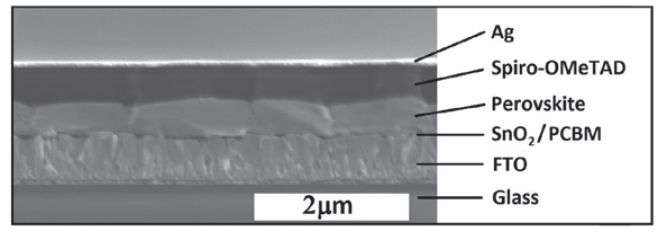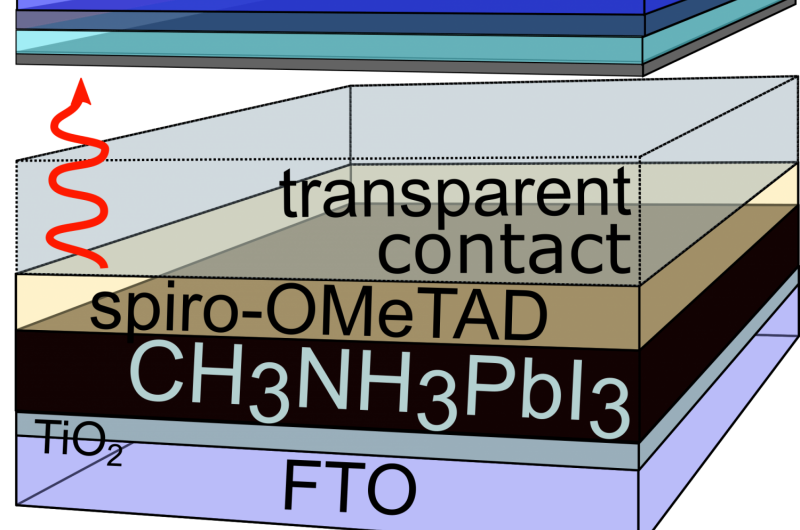January 8, 2016 report
Adding cesium to perovskite in solar cells boosts performance of silicon

Bob Yirka
news contributor

(Â鶹ÒùÔº)—A team of researchers working at Oxford University has found a way to add cesium to perovskite solar cells to boost the performance of silicon, while maintaining the efficiency benefits it offers. In their paper published in the journal Science, the team describes their process which included finding a way to overcome the problem of efficiency loss in such materials that normally come about due to a limited range of solar spectrum use.
As researchers around the world continue to look for the next-generation material to use for solar power collection to increase efficiency, others continue to seek ways to improve the standard now in use: silicon. In this new effort the research team noted the work done by others looking into the possibility of using perovskites (minerals made mostly of calcium titanate) as possible replacements for silicon, and found a way to add cesium to the mineral to make it work in tandem with silicon to create a solar collector that is up to 25 percent more efficient than those now in use. Such an improvement in performance could signal a transformation in real world use—solar power has thus far not proven to be efficient enough for the average consumer to cut the cord from the utility company—doubling efficiency might just make doing so a smart investment.
Up until now, efforts to get perovskites to work in tandem with silicon have been held back by inefficiencies in the cells due to the range of solar spectrum they were able to use—attempts to tweak the mix have led to instability in the materials. To overcome this problem, the team at Oxford came up with a process based on substituting certain ions in the material with cesium ions—it solved the spectrum problem, they report, while maintaining the stability of the overall structure.
The researchers acknowledge that their cells are not ready for prime time just yet, more work will have to be done to make sure the cells work in the real world, which could be a challenge, as perovskites historically have a tendency to decay when exposed to moisture and air.

Written for you by our author —this article is the result of careful human work. We rely on readers like you to keep independent science journalism alive. If this reporting matters to you, please consider a (especially monthly). You'll get an ad-free account as a thank-you.
More information: D. P. McMeekin et al. A mixed-cation lead mixed-halide perovskite absorber for tandem solar cells, Science (2016).
Abstract
Metal halide perovskite photovoltaic cells could potentially boost the efficiency of commercial silicon photovoltaic modules from ∼20 toward 30% when used in tandem architectures. An optimum perovskite cell optical band gap of ~1.75 electron volts (eV) can be achieved by varying halide composition, but to date, such materials have had poor photostability and thermal stability. Here we present a highly crystalline and compositionally photostable material, [HC(NH2)2]0.83Cs0.17Pb(I0.6Br0.4)3, with an optical band gap of ~1.74 eV, and we fabricated perovskite cells that reached open-circuit voltages of 1.2 volts and power conversion efficiency of over 17% on small areas and 14.7% on 0.715 cm2 cells. By combining these perovskite cells with a 19%-efficient silicon cell, we demonstrated the feasibility of achieving >25%-efficient four-terminal tandem cells.
Journal information: Science
© 2016 Tech Xplore

















